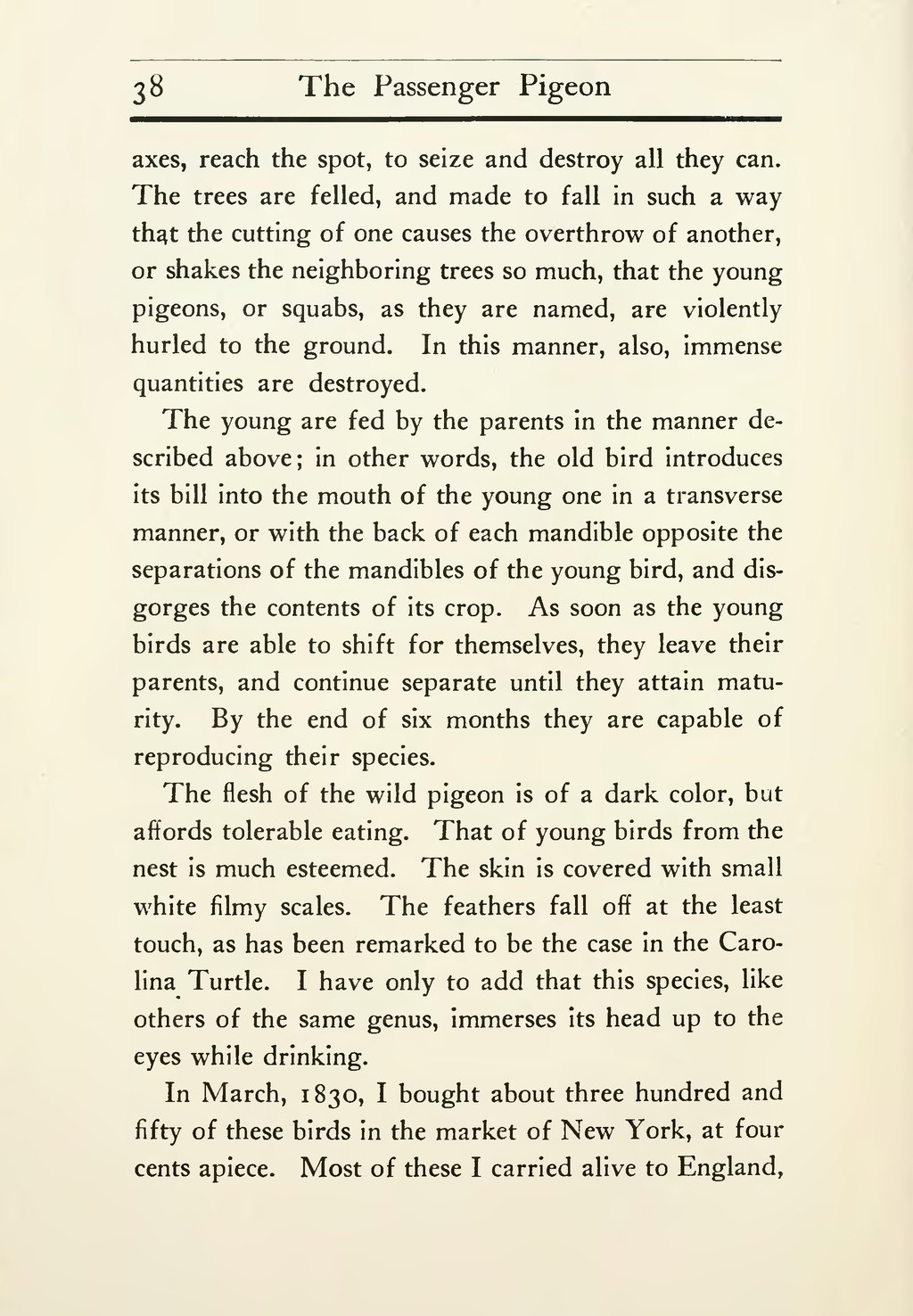axes, reach the spot, to seize and destroy all they can. The trees are felled, and made to fall in such a way that the cutting of one causes the overthrow of another, or shakes the neighboring trees so much, that the young pigeons, or squabs, as they are named, are violently hurled to the ground. In this manner, also, immense quantities are destroyed.
The young are fed by the parents in the manner described above; in other words, the old bird introduces its bill into the mouth of the young one in a transverse manner, or with the back of each mandible opposite the separations of the mandibles of the young bird, and disgorges the contents of its crop. As soon as the young birds are able to shift for themselves, they leave their parents, and continue separate until they attain maturity. By the end of six months they are capable of reproducing their species.
The flesh of the wild pigeon is of a dark color, but affords tolerable eating. That of young birds from the nest is much esteemed. The skin is covered with small white filmy scales. The feathers fall off at the least touch, as has been remarked to be the case in the Carolina Turtle. I have only to add that this species, like others of the same genus, immerses its head up to the eyes while drinking.
In March, 1830, I bought about three hundred and fifty of these birds in the market of New York, at four cents apiece. Most of these I carried alive to England,
